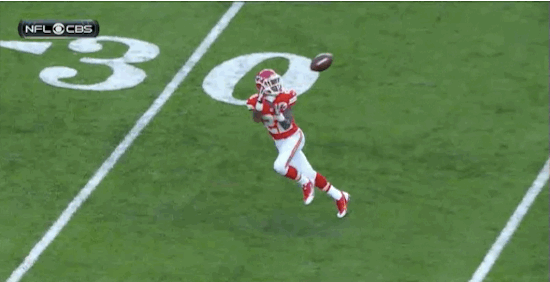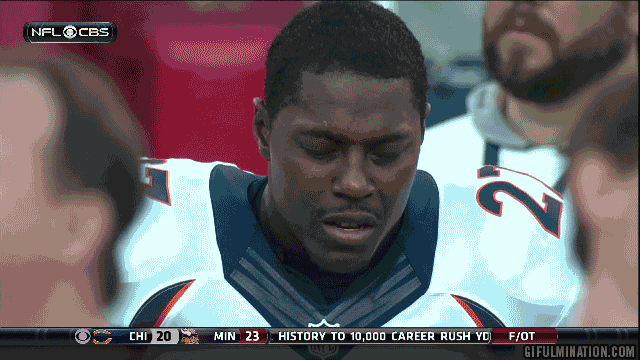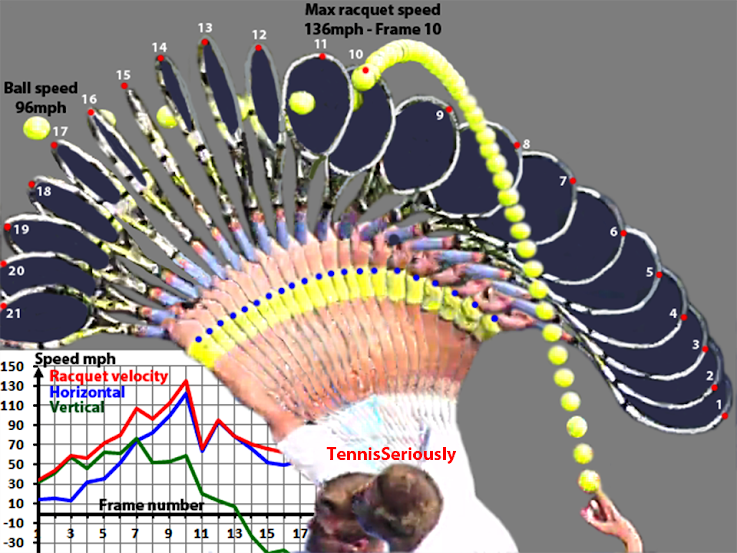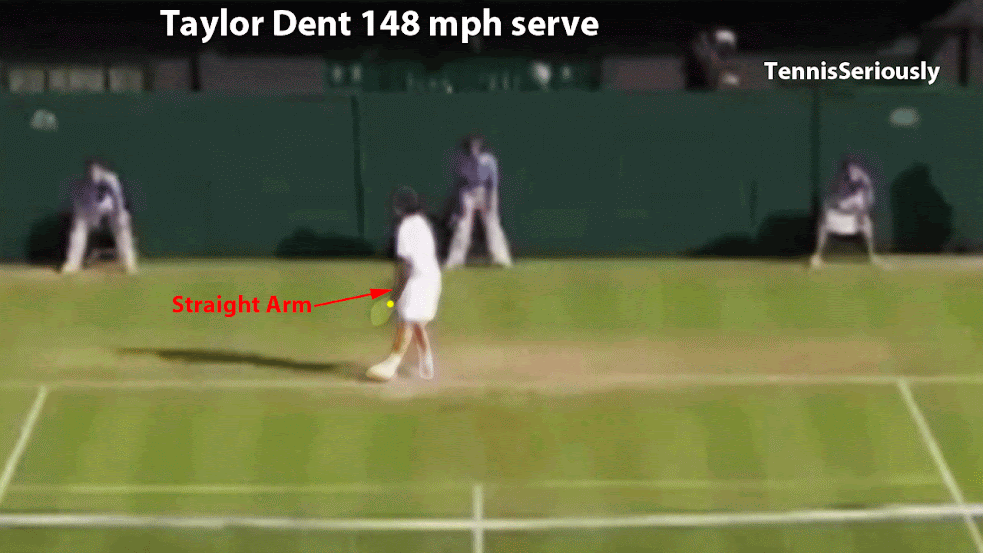The best way to measure toss height would be to look at the vertical distance of the drop of the ball from the peak of the toss to the contact point. With a proper camera set up, it should be possible to do this fairly accurately.
Roscoe Tanner was said to sometimes hit the ball as it was still rising, but I don't know any pro player hitting that way today. Dolgopolov and Ivanisevic probably normally have a drop measured in inches at contact.
It would be interesting to see how consistent the drop amount is with a higher drop player like Berdych. My guess is that the toss height would vary to a greater extent the higher the ball is being tossed.
OK, someone figure out how to do this. I don't know how many serves you'd have to shoot from a fixed position and then use some sort of simple triangulation to get a small data set. It might make an interesting article.
Random selection of servers - get a list of the top 50 or 100 and pick one in the middle with your eyes closed. Count up and down from there by 5s to select other players and find youtubes. Do 4-6 total or as many as you feel like. It might be a good idea to bookmark the youtube.
It is best to download the Youtube and view it on your computer screen with Quicktime. You can easily select the exact frame you want.
Kinovea is a free open source video measuring application. It has measuring tools and many other capabilities.
Select videos that do not appear to be too wide angle as the magnification varies across the frame. If it appears to have considerable wide angle distortions don't use it.
To measure the height of the toss and the height of impact requires an object of known length to use as a length reference. Also, that object should not be tilted toward or away from the camera. If the person is standing and the feet are visible, their height can be used as a calibration scale. If their feet are not visible, the racket is another known length. Measure it when it is not tilted toward or away from the camera, that is, the length will be at its max. 28 or 29", a 3% error won't make much difference. Also, record whether or not the player moves on through Trophy Position or pauses for a while.
WARNING _ Some computer screens may be damaged by the pressure of a pencil. Use an index card or two and don't press to make the marks. An alternate way to measure is to use a ruler placed on the screen and record. I like the index card, record on both sides and the edges. Write the server and whether they pause or move through the Trophy Position on the card.
1) Display the peak of the toss.
2) Place an index card on the computer screen and gently mark the peak of the toss on the edge of the card. Keep the card in the same spot.
3) Step ahead to the impact. Gently mark that on the card.
4) Now we have the distance between the toss peak and impact on the card.
5) Select the racket length as the reference scale or the server's height. Mark that also on the edge of the index card.
Scale: Try to select a frame showing the racket when it is a plane parallel to the camera - not tilted away or toward the camera. If you look at it carefully and can't tell if it's tilted, good enough. Horizontal or vertical does not matter. Pick the player standing most upright near the serving spot to use their height as a reference know height. Get their height from the ATP records.
6) Measure the distance from the peak of the toss to impact.
If you have Kinovea use its video measuring capabilities.
X = X' x Y/Y'
X - real Toss Apex Height (or Impact Height)
X' - measured height on computer screen or index card in mm.
Y' - measured height of racket length or server's height on computer screen or from index card in mm.
Y - real length of tennis racket or server's height











